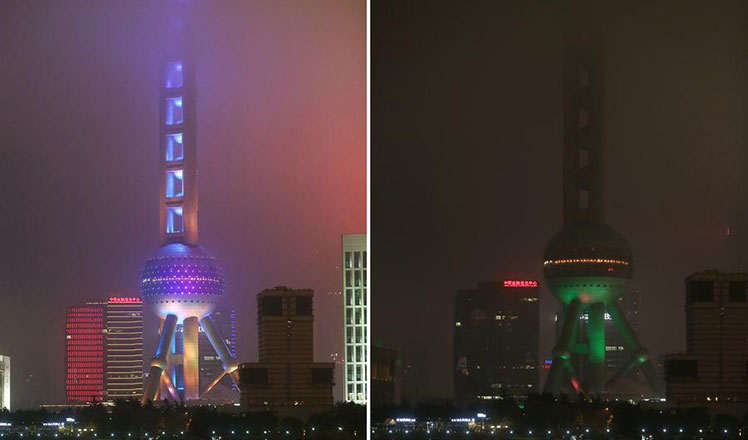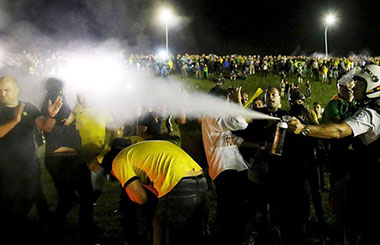NASA's Kepler sees first 'shock breakout' in exploding star
Updated: 2016-03-22 09:03
(Xinhua)
|
||||||||
WASHINGTON - Scientists using the US Kepler space telescope said Monday they have captured for the first time the brilliant flash of an exploding star's shockwave, called a "shock breakout," in the visible light range.
|
 |
|
This artist's concept depicts one possible appearance of the planet Kepler-452b, the first near-Earth-size world to be found in the habitable zone of star that is similar to our sun by the Kepler space telescope. [Photo/Agencies] |
The researchers, led by Peter Garnavich, an astrophysics professor at the University of Notre Dame, Indiana, analyzed light captured by Kepler every 30 minutes over a three-year period from some 50 trillion stars.
They were hunting for signs of massive stellar death explosions known as supernovae, which begin when the internal furnace of a star runs out of nuclear fuel causing its core to collapse as gravity takes over.
During an supernovae, a supersonic shockwave is sent out from the star's core, which will then cause a bright flash of light, called a "shock breakout," when it reaches the surface of the star.
"The flash from a breakout should last about an hour, so you have to be very lucky or continuously stare at millions of stars just to catch one flash," said Garnavich.
In the study, the researchers discovered two supernovae in the act of exploding, which were captured by Kepler in 2011.
The first, KSN 2011a, is nearly 300 times the size of Sun and a mere 700 million light years from Earth. The second, KSN 2011d, is roughly 500 times the size of Sun and around 1.2 billion light years away.
While both explosions delivered a similar energetic punch, no shock breakout was seen in KSN 2011a, the smaller of the two stars.
The researchers said that is likely due to the smaller one being surrounded by gas, perhaps enough to mask the shockwave when it reached the star's surface.
The findings will be published by the Astrophysical Journal.
- NASA's Kepler sees first 'shock breakout' in exploding star
- First case of Zika virus detected in S.Korea
- Syrian mothers: Survival and loss
- Gender barrier falls as Air Force general makes history
- Russia retrieves data from recorder of crashed plane
- Obama arrives in Cuba to begin visit in thawing of ties

 Practice makes perfect: Preparing for Boao forum
Practice makes perfect: Preparing for Boao forum
 A look of Boao Forum for Asia International Conference Center
A look of Boao Forum for Asia International Conference Center
 Culture Insider: 5 things you may not know about the Spring Equinox
Culture Insider: 5 things you may not know about the Spring Equinox
 Landmarks go dark in China for Earth Hour
Landmarks go dark in China for Earth Hour
 At least five dead in tanker truck explosion in central China
At least five dead in tanker truck explosion in central China
 Brazil's Lula sworn in over protests as Rousseff faces impeachment
Brazil's Lula sworn in over protests as Rousseff faces impeachment
 Smart city: A solution to urban problems?
Smart city: A solution to urban problems?
 St. Patrick's Day celebrated around world
St. Patrick's Day celebrated around world
Most Viewed
Editor's Picks

|

|

|

|

|

|
Today's Top News
Marriott unlikely to top Anbang offer for Starwood: Observers
Chinese biopharma debuts on Nasdaq
What ends Jeb Bush's White House hopes
Investigation for Nicolas's campaign
Will US-ASEAN meeting be good for region?
Accentuate the positive in Sino-US relations
Dangerous games on peninsula will have no winner
National Art Museum showing 400 puppets in new exhibition
US Weekly

|

|







